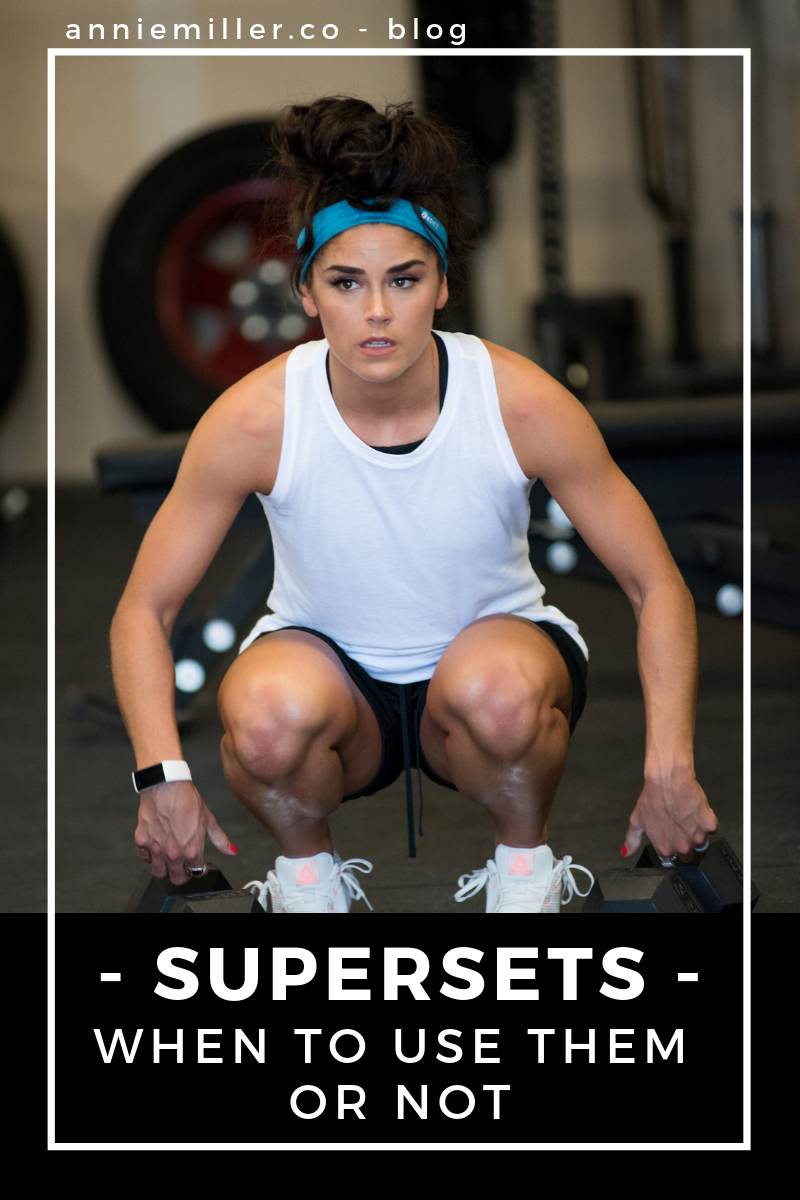the blog
welcome to
looking for something specific? find it here

What are supersets? Why do we use them? And when might we not use them? The idea of supersets is very broad. Put simply, it is when two or more exercises are paired together in a workout. For example, alternating between Push ups and pull ups for multiple sets. That’s it.
When to use supersets
MUSCLE TAXING
Supersets can be used to work opposing muscle groups; (bis and tris, chest and back, knee dominant [quad] and hip dominant [hamstring + glutes]. This ideally lowers the demand for rest because one muscle group is “resting” while the other working. This is not entirely true because there will always be an antagonist and protagonist relationship between opposing muscle groups. BUT, the rule applies enough.
In line with the idea of opposing muscle groups, supersets can also be used to alternate between different areas of the body. Think upper and lower body. This is a great tool to use for full body workouts, or on recovery days when multiple areas of the body might be sore and don’t need to be taxed any further.
Supersets can also be used to tax ONE AREA of the body from different angles; Hamstring curl, and Romanian deadlift, push ups and bench flies, pull ups and reverse flies, hip thrust and lateral band walks, squats and hero squats, shoulder press and lateral raises, and the list goes on.
Both are examples of supersets, used for completely different purposes.
INCREASE INTENSITY
Generally speaking, if there is little to no rest between the two or three exercises (sometimes called a tri-set) being performed, then the intensity is going to be higher than if only one exercise was being performed. So in this sense, supersets can provide a circuit training like response with higher heart rate and longer work periods.
When not to use supersets
UNILATERAL EXERCISES
When you are doing single arm or single leg work, keep in mind that the non-working side is resting while the working side is…well, working. Adding a super set to this further increases the rest period of that non-working leg. You could pair two single leg hamstring exercises together, but then you might as well keep them separate, performing both as a single exercise, alternating legs with little to no rest.
For example, 4x8ea single leg Romanian deadlift and 4x8ea single leg hamstring curls. Might as well do the RDL’s alone, alternating legs (4x 8 full reps right, 8 full reps L), then move on to the curls (4x 8 full reps right, 8 full reps L).
HIGH STRENGTH/POWER DEMAND
Supersets are most often seen in “accessory work” or the lifts done AFTER the big lifts like squats, deadlifts, bench press, overhead press or any olympic work (cleans, jerks, snatches).
Now, exercises are just exercises and are not confined to “superset worthy” or “not-superset worthy.” The bigger focus here is on the GOAL and demand of the lift. If you’re doing strength or power work as your first lift (and you should be), then your muscles and likely your brain, need adequate rest periods in order to repeat the strength for multiple sets. IF you decide to superset a big lift with another exercise, just make sure there is a long enough rest period after both lifts are completed. Remember we’re referring to lifting loads that are strength/power based, not hypertrophy/endurance based.
I am sure there are many more reasons on both ends of the superset spectrum, but for now, chew on those. And of course, apply the knowledge to your training or LOOK FOR THE KNOWLEDGE in the program you are following.
Have questions? Drop ya girl a line in the comments.
Want more fitness-y posts? Click here to creep the fitness archives.
I'm an adventurous introvert from Vancouver, Washington who lives on sleep + "me time." I'm a lover of lifting weights, dinosaurs, real talk and traveling with my husband. I am here to help you move better, lift more, bust the myths of the fitness industry, and inspire you to love the process.
Hey you,
The name's Annie & you're reading my thoughts. Let's get acquainted.
the whole story >
looking for something specific? find it here
THE LINKS BELOW ARE AFFILIATE LINKS
SKIN CARE
Nutrition
brands I love
working against gravity
Fre skin care
favorites
blue light blockers
klassy network
code: fdba saves you 15% off
online TRAINERS
save $50
code: ANNIE saves you 20% off
You love my style, trust my reviews, and want more Annie Miller Concepts vibes in your life? Shop my favorite brands. You get awesome products and yours truly gets a little kick-back.
